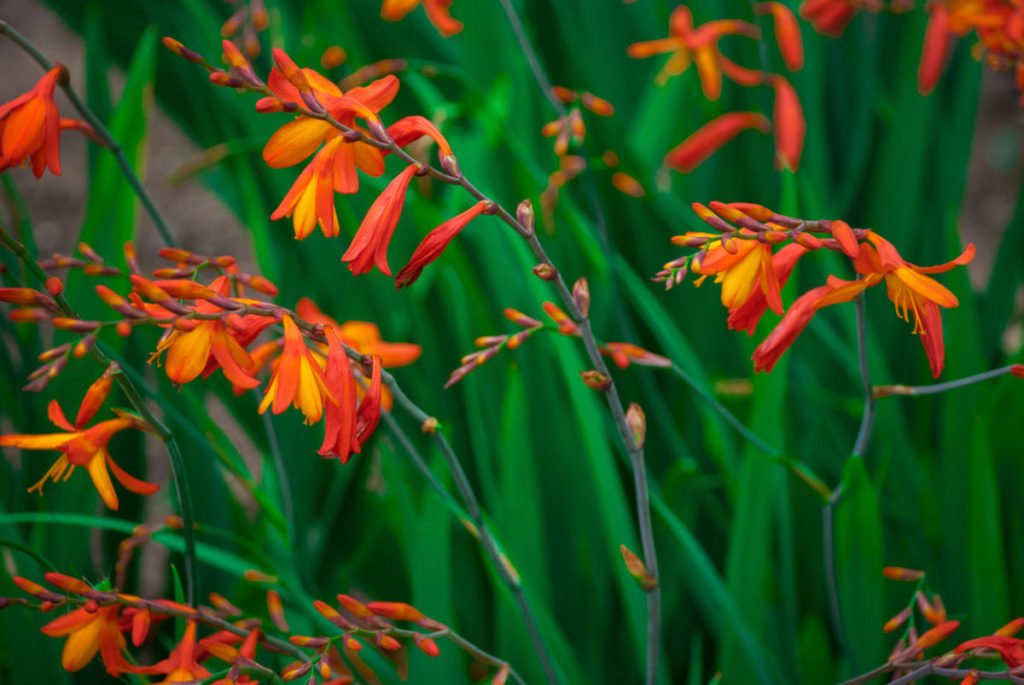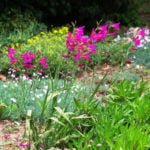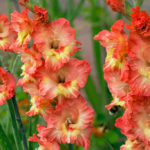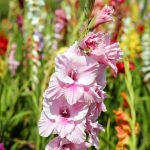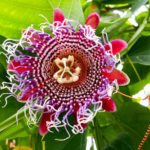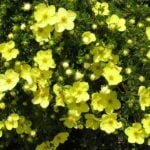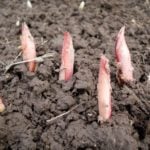Crocosmia or montbretia are two different names for the same plant. There is a third name for Tritonia, and this plant is popularly called Japanese gladiolus. From Latin, the name crocosmia translates as “saffron smell” — they really have dried flowers. And the name” montbretia ” was given to the flower in honor of the French botanist de Montbrun.
The flower owes its appearance to the French breeder Lemoine, who crossed Crocosmia aurea and Crocosmia pottsii in 1880. The result is a garden hybrid of two interesting South African plants with delicate, star-shaped funnel-shaped flowers collected in small red-orange spikelets.
Crocosmia looks great in open beds due to its long and abundant flowering, which, depending on the weather and climate, can last from mid-summer to September, and sometimes longer. After cutting, they remain fresh for 2 weeks. This flower will be a great decoration for any bouquet.
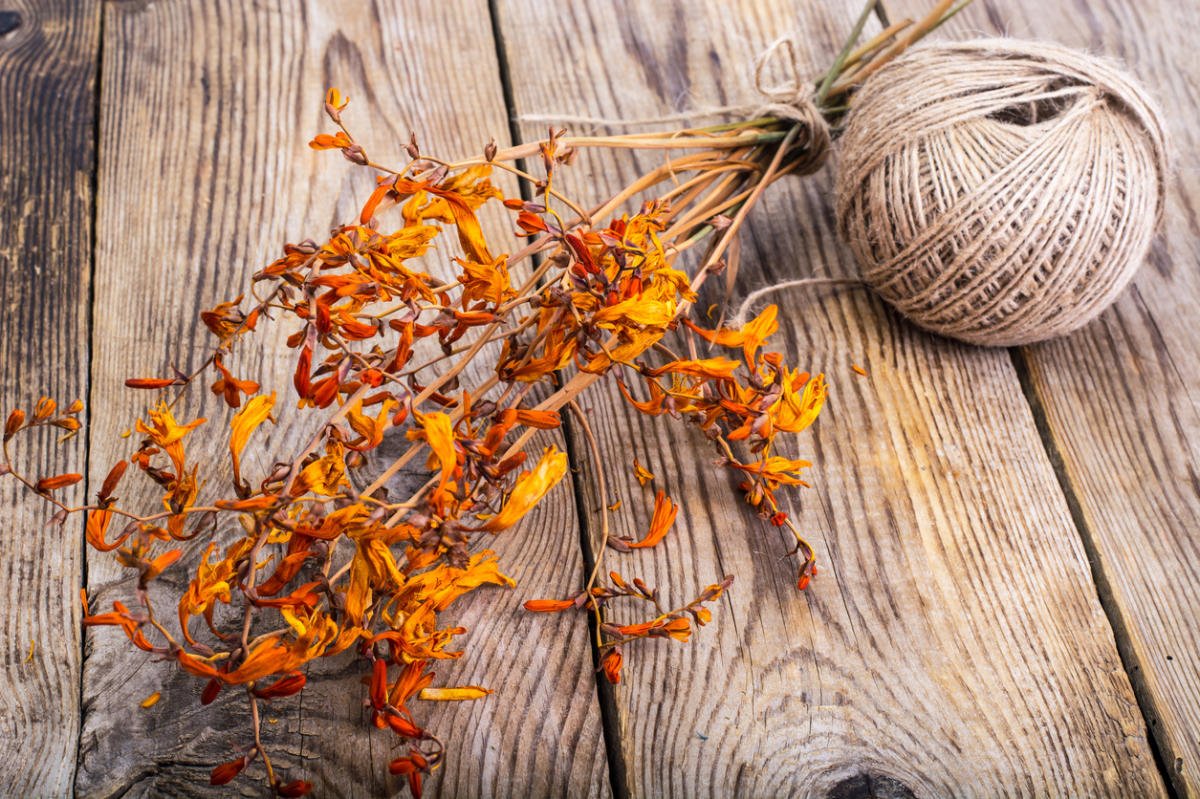
Dried flowers of crocosmia have a saffron smell.
Crocosmia has narrowly xiphoid light green leaves and thin branched stems up to one meter high (1.1 yard). The buds are small, with a few brown shells.
Planting and reproduction
Crocosmia can be propagated by corms, seeds. Brown-red large seeds are sown on a lightbox or in a greenhouse in February-March, as the seedlings grow up, they are planted in pots. On the bed they are planted with a lump of earth in mid-May. Seedlings grown from seeds bloom in the second or third year, corms-in the second. In the central part, corms are planted in the soil simultaneously with gladioli (late April-early May).
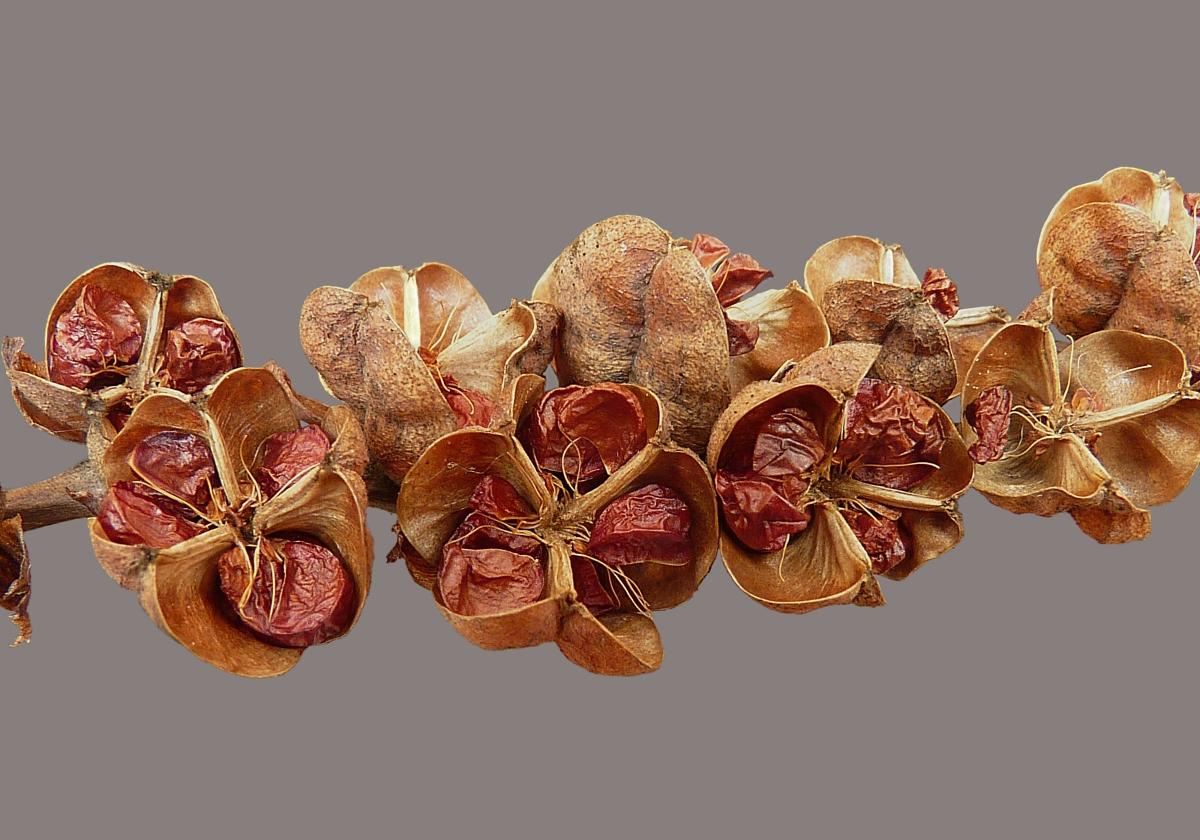
Crocosmia seeds
Crocosmias of different varieties are planted in different areas. Corms are planted in late April-early May in sunny areas. Plant in very light, shaded areas. Before planting, the corms are stored for several days in the living room, kept warm, and small, independent plants are separated.Soak for a few hours in a weak solution of potassium permanganate and lower it into the soil to a depth of 4-5 cm (1.6-2 inch).
Crocosmia likes the soil moist, loose, rich in humus. Prepare the plot for planting in the fall. In poorly drained soil, sand and fertilizers are added. Corms are buried to a depth of 7-10 cm (2.7-3.9 inch), keeping the distance between them by 10-12 cm (3.9-4.7 inch). Plants that have bloomed earlier are grown in small pots and planted with a lump of earth.
How to Care?
Crocosmia is watered abundantly, but not often. After watering or rain, loosen the soil and weeds. As necessary, install pegs for garter stems. To speed up the growth of plants, feed them with nitrogen fertilizers.
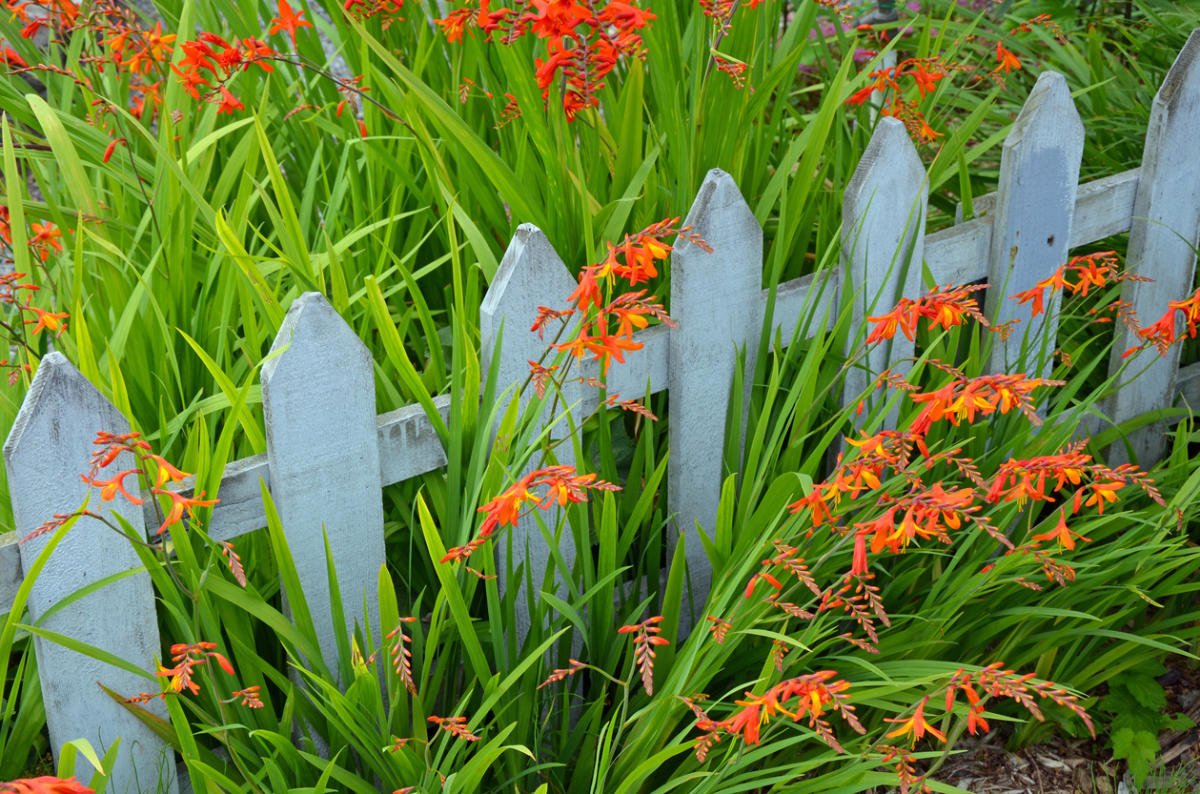
In the summer, they switch to top dressing with mullein infusion (1: 10) and mineral supplements with potassium. When flowering ends, it is important to cut the stems-so that the tubers ripen better, which means that it is better to leave them in the ground and bury them.
Crocosmia are quite resistant to disease. The main pests are mole crickets and thrips.
Overwintering
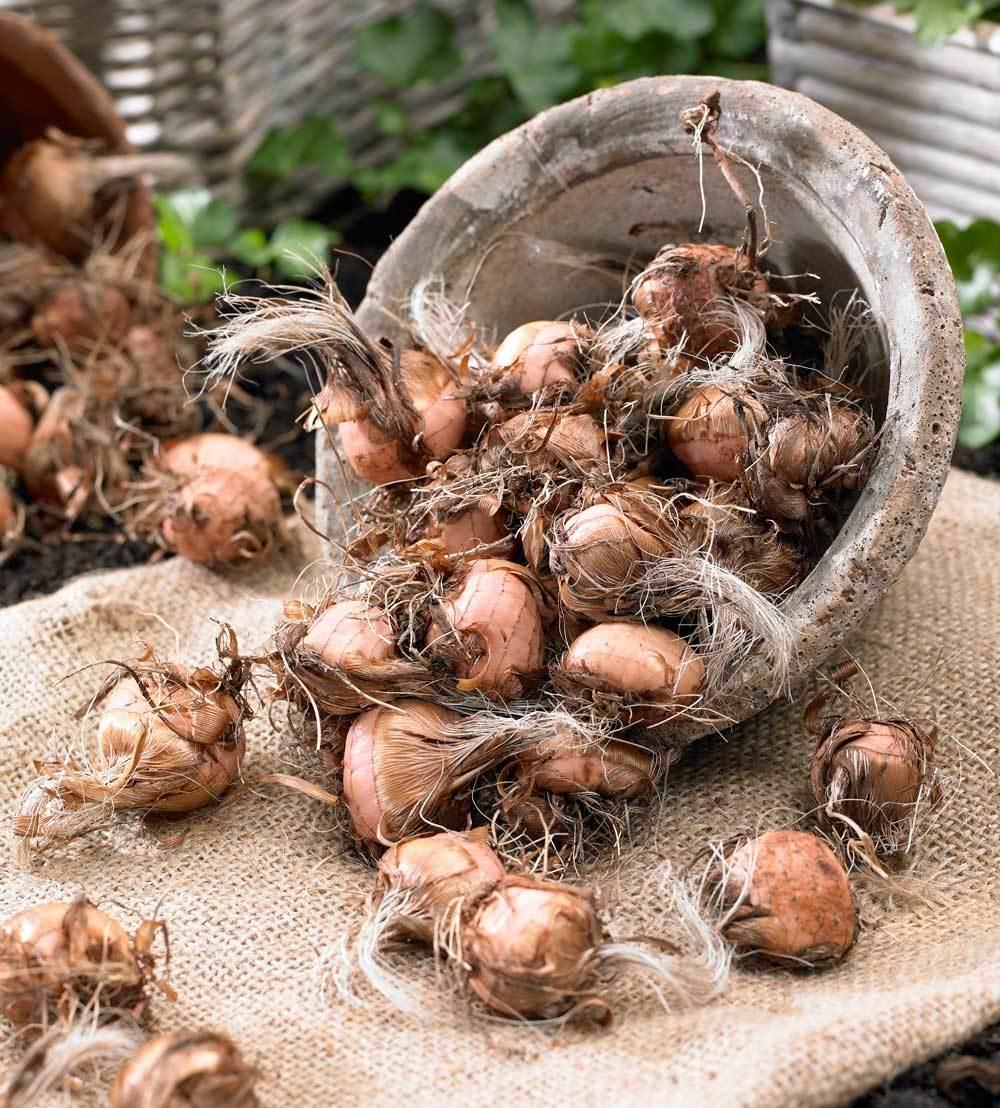
Crocosmia bulbs
It successfully overwinters in flower beds even at low temperatures. Many gardeners believe that corms are easier to keep in the ground than in the basement, sprinkled with dry leaves in the fall with a layer of 20 cm (7.9 inch) and covered with a film on top. Only in the spring, you need to remove the leaves immediately.
Crocosmia can winter well only on dry soils. In low places of planting, it is better to dig out the tubers so that they do not get wet. In the spring, remove the lid and cut off all the old leaves. Dig out the tubers every three years for propagation. If this rule is ignored, the plants will thrive worse because of the density.
Best Varieties
Crocosmia “Emily McKenzie”
Very decorative, pleasant variety. The flowers are brownish-orange, symmetrical, with bright orange spots in the center of the flower. Blooms later. Plants up to 60 cm (2 feet).
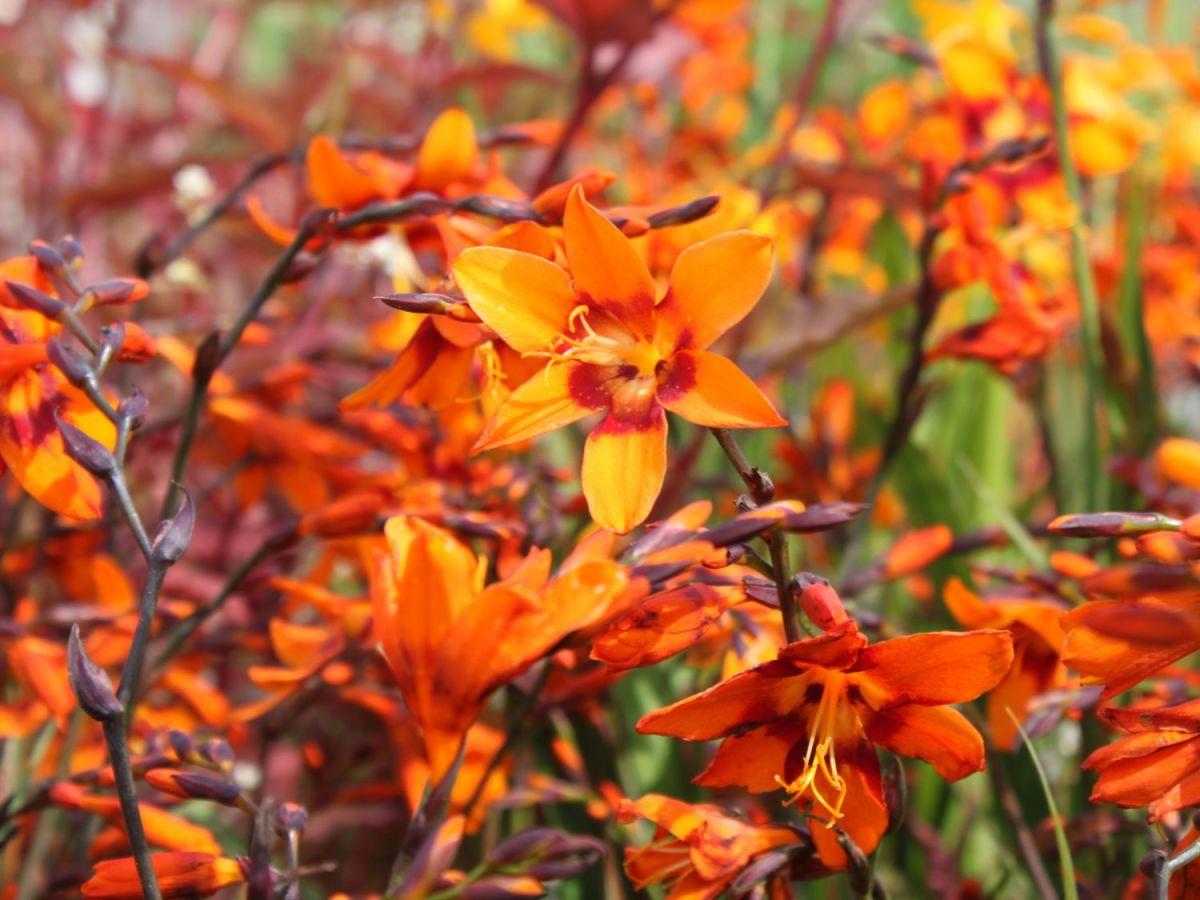
Crocosmia “Norwich Canary”
The height of the plant is up to 60 cm (2 feet). The flowers are drooping, canary-yellow in color.
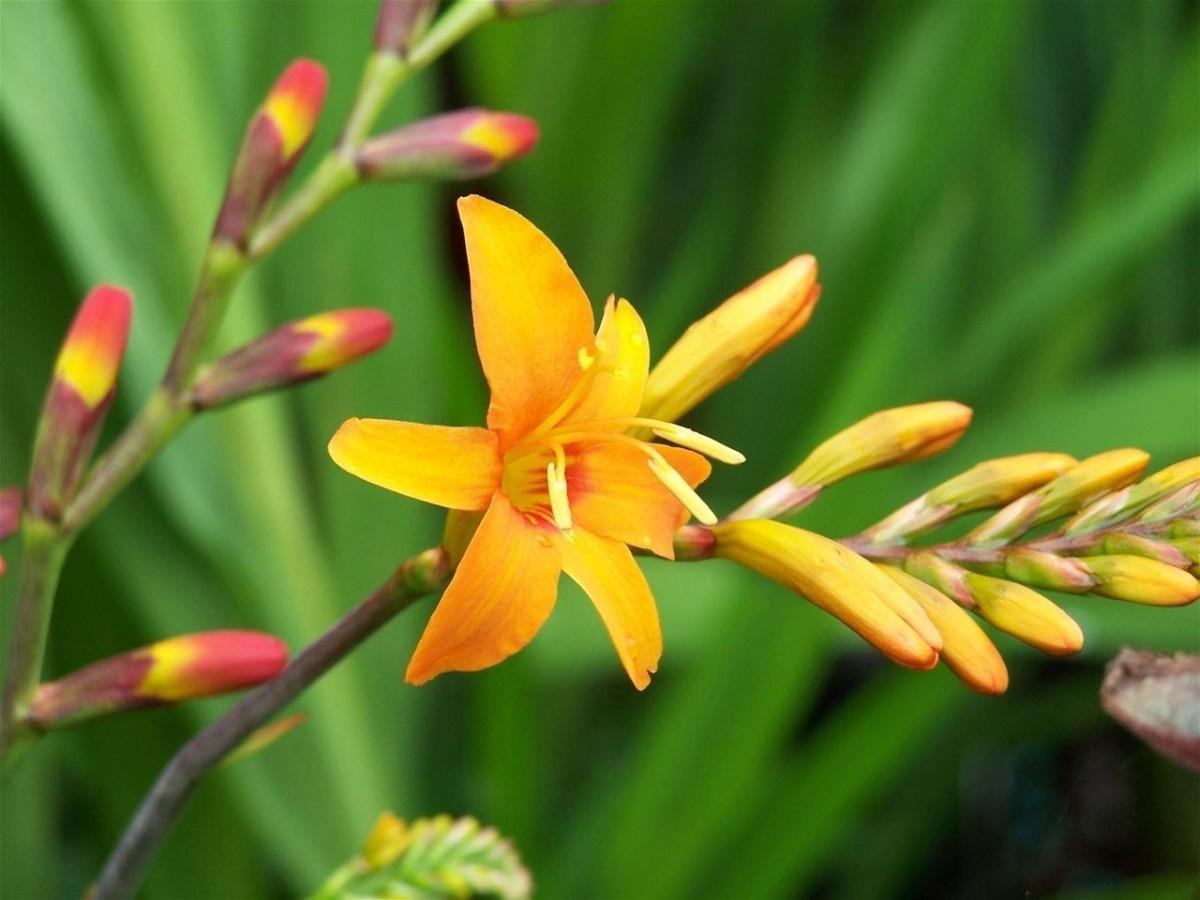
Crocosmia “Aurea”
This species is native to the Republic of South Africa. The leaf plates have a xiphoid or linear shape, and the flowers have a rich orange-yellow color. Flowering in this species is observed at the beginning of the autumn period. It has been cultivated since 1846. There are several forms with red, orange and yellow flowers.
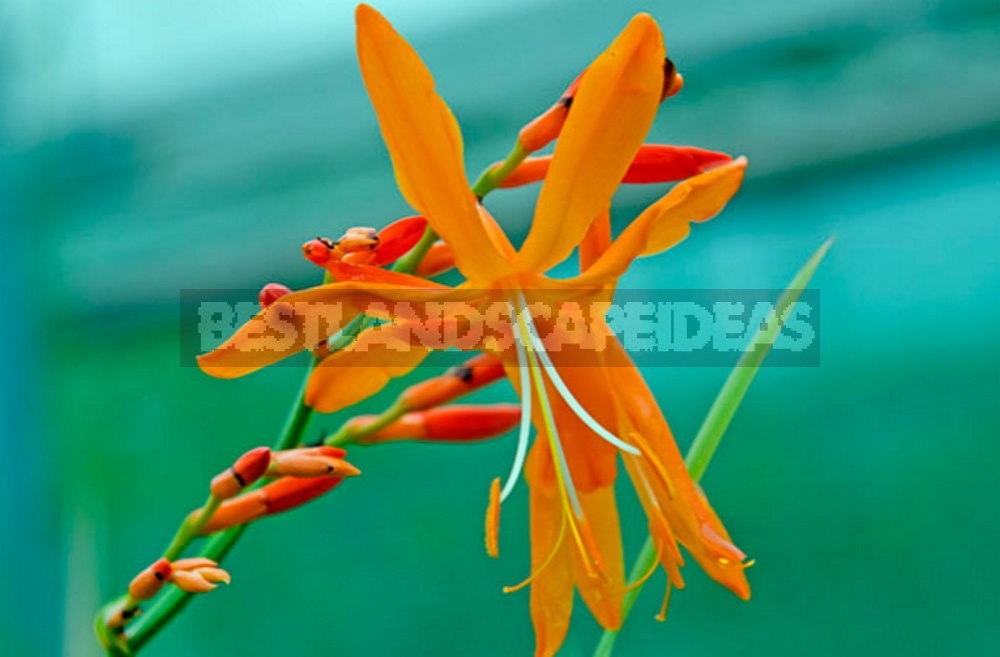
Crocosmia “Star of the East”
One of the most beautiful and large-flowered varieties. Late-flowering, up to 1 m (1.1 yard) tall, apricot-orange flowers in the form of stars with a bright core up to 10 cm (3.9 inch) in diameter. In winter, it requires shelter.
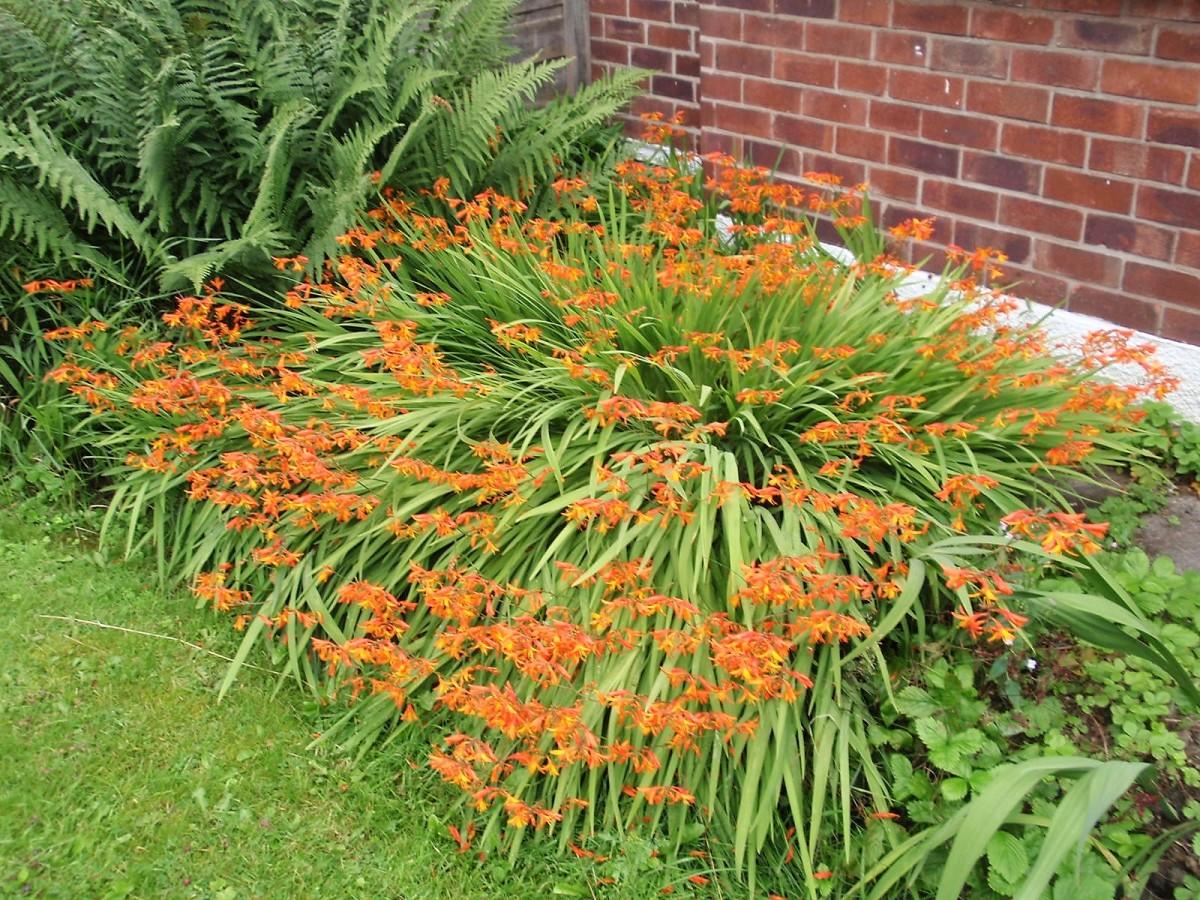
Crocosmia “Lucifer”
Of all the crocosmias, it is the most brightly colored option. The plant is tall — up to 1.5 m (1.6 yard), has erect stems and bright, tomato-red flowers. Although it has an endurance to lower temperatures, but in winter it is better to cover it
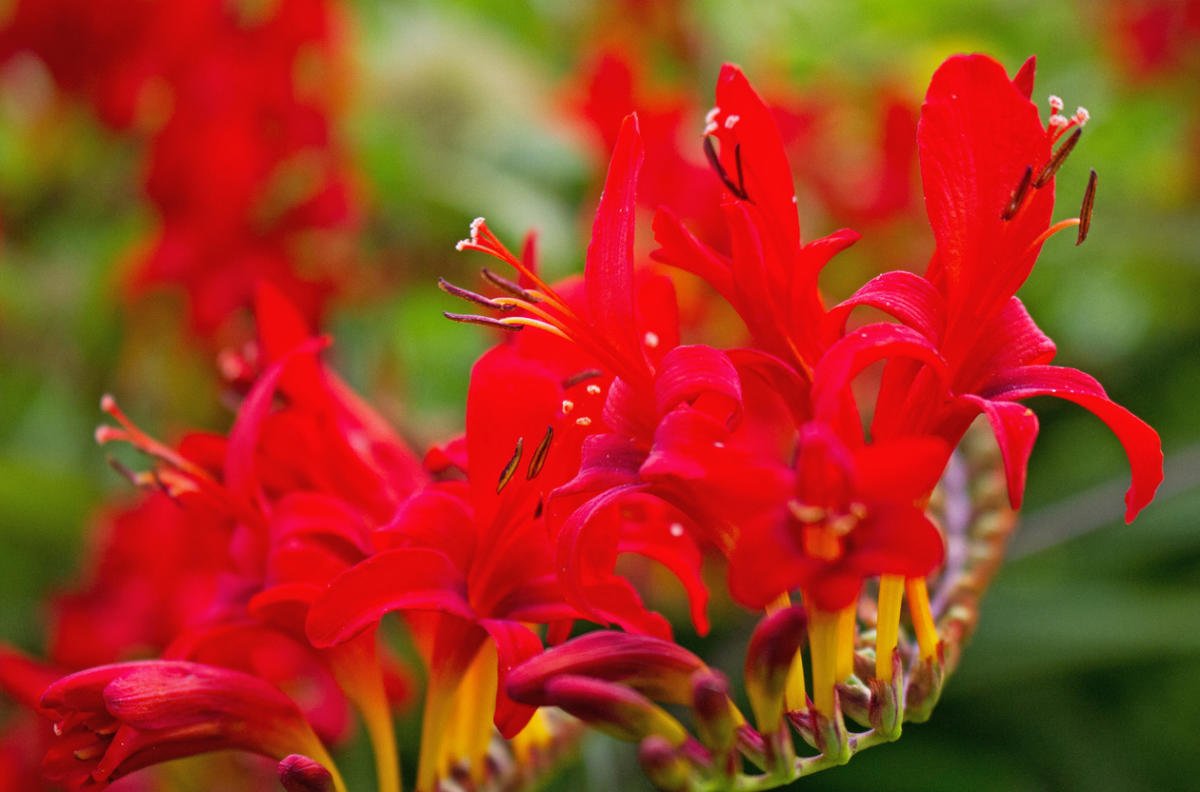
Elegant crocosmia flowers will perfectly decorate your summer and autumn flower garden. They will look equally great both by themselves and in a group with other colors.
